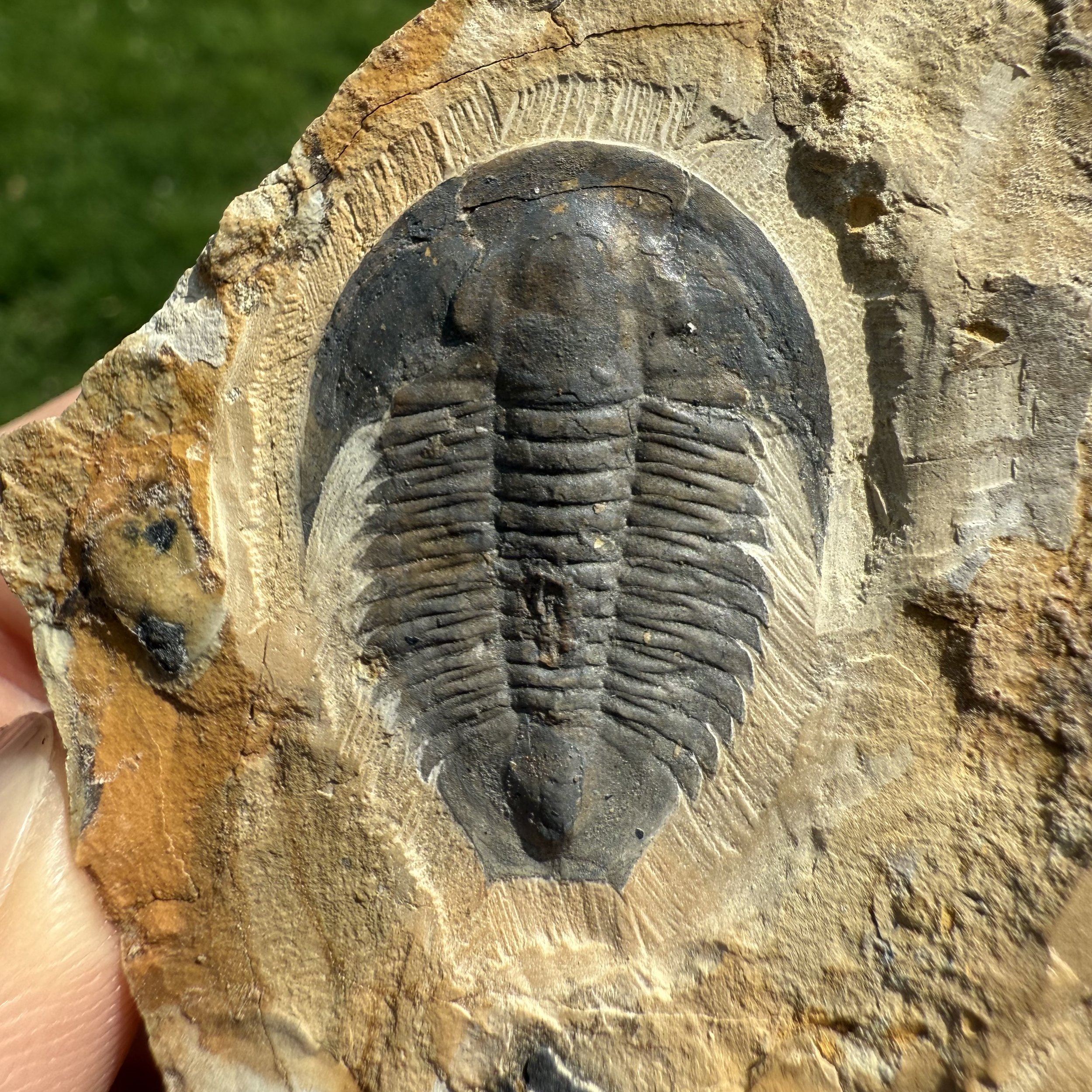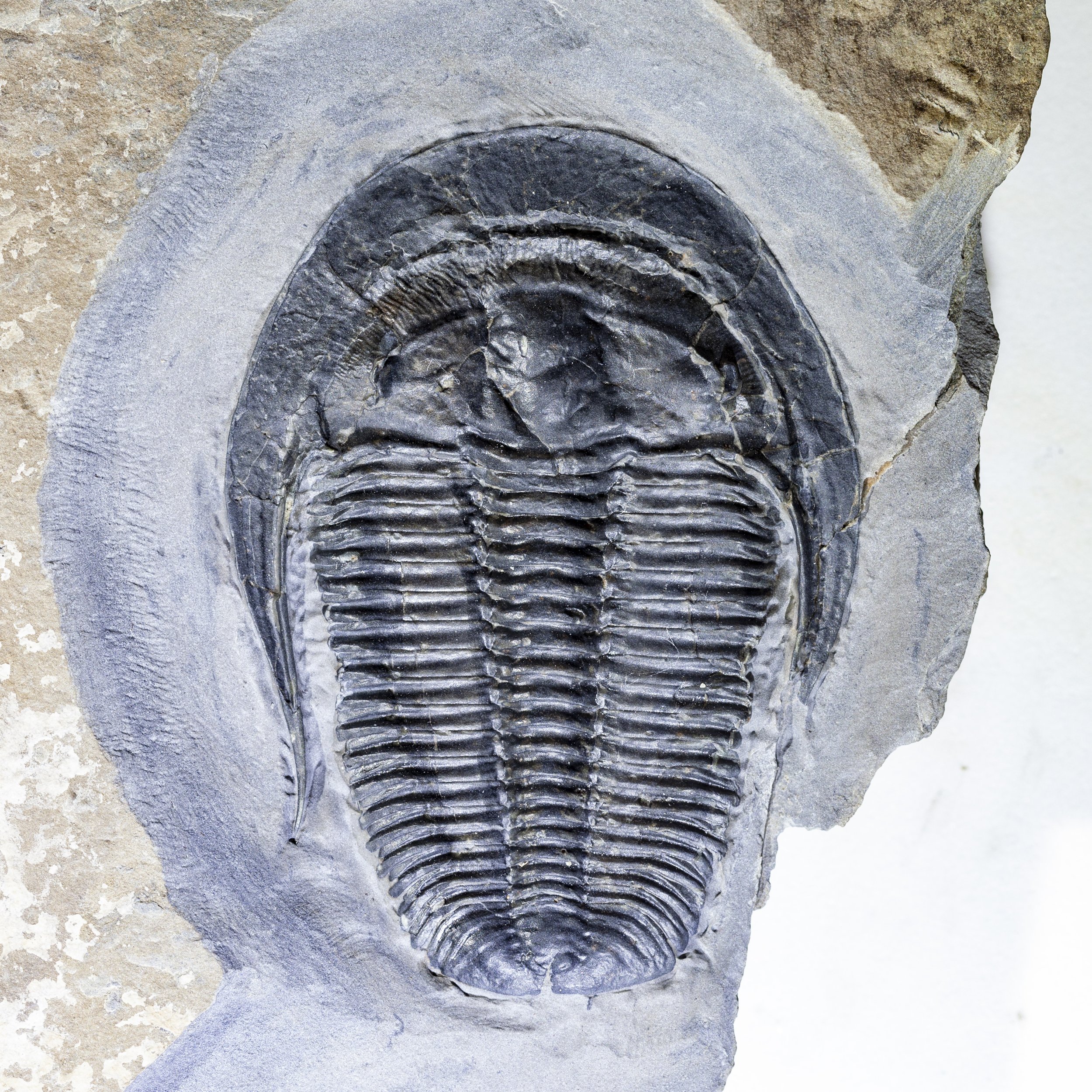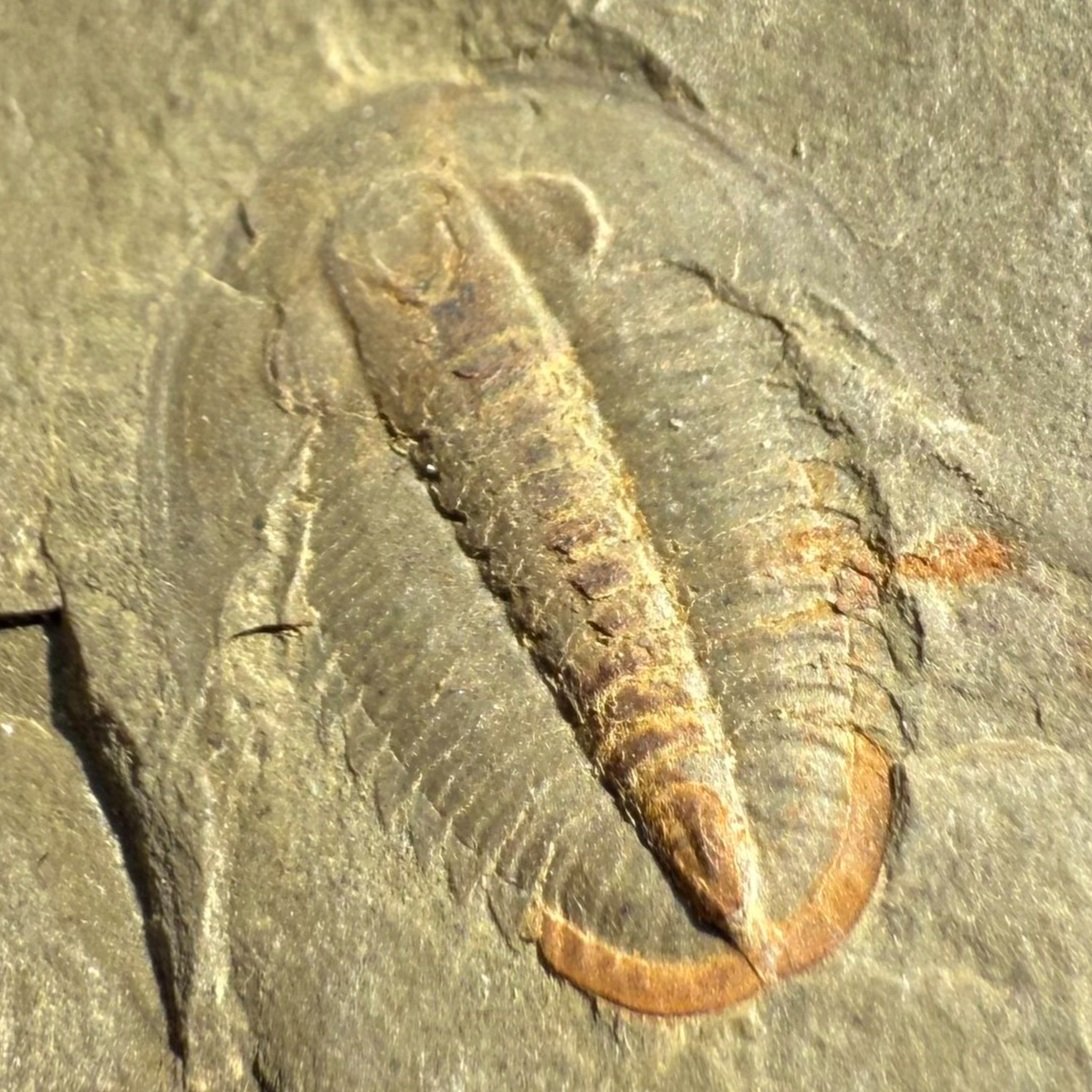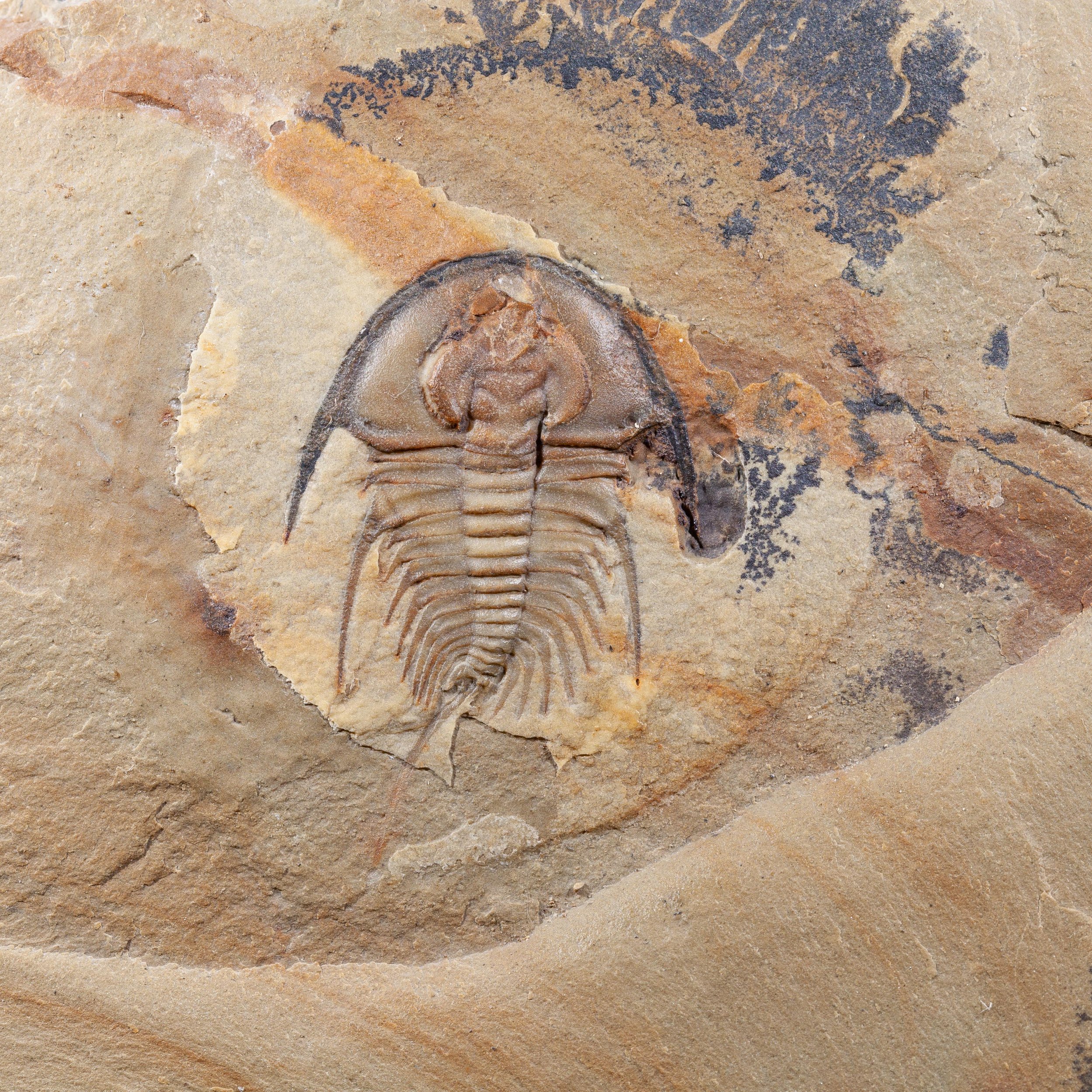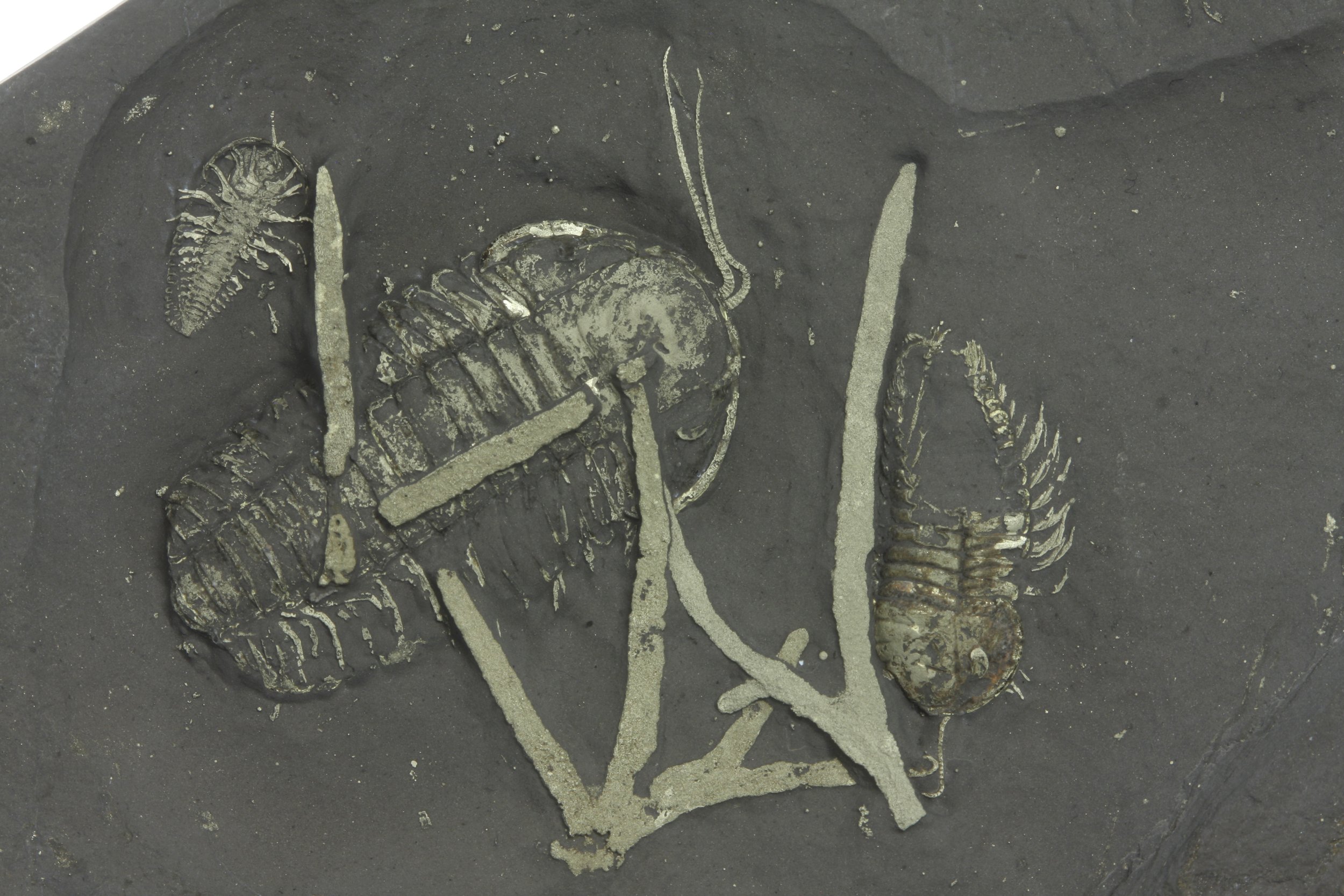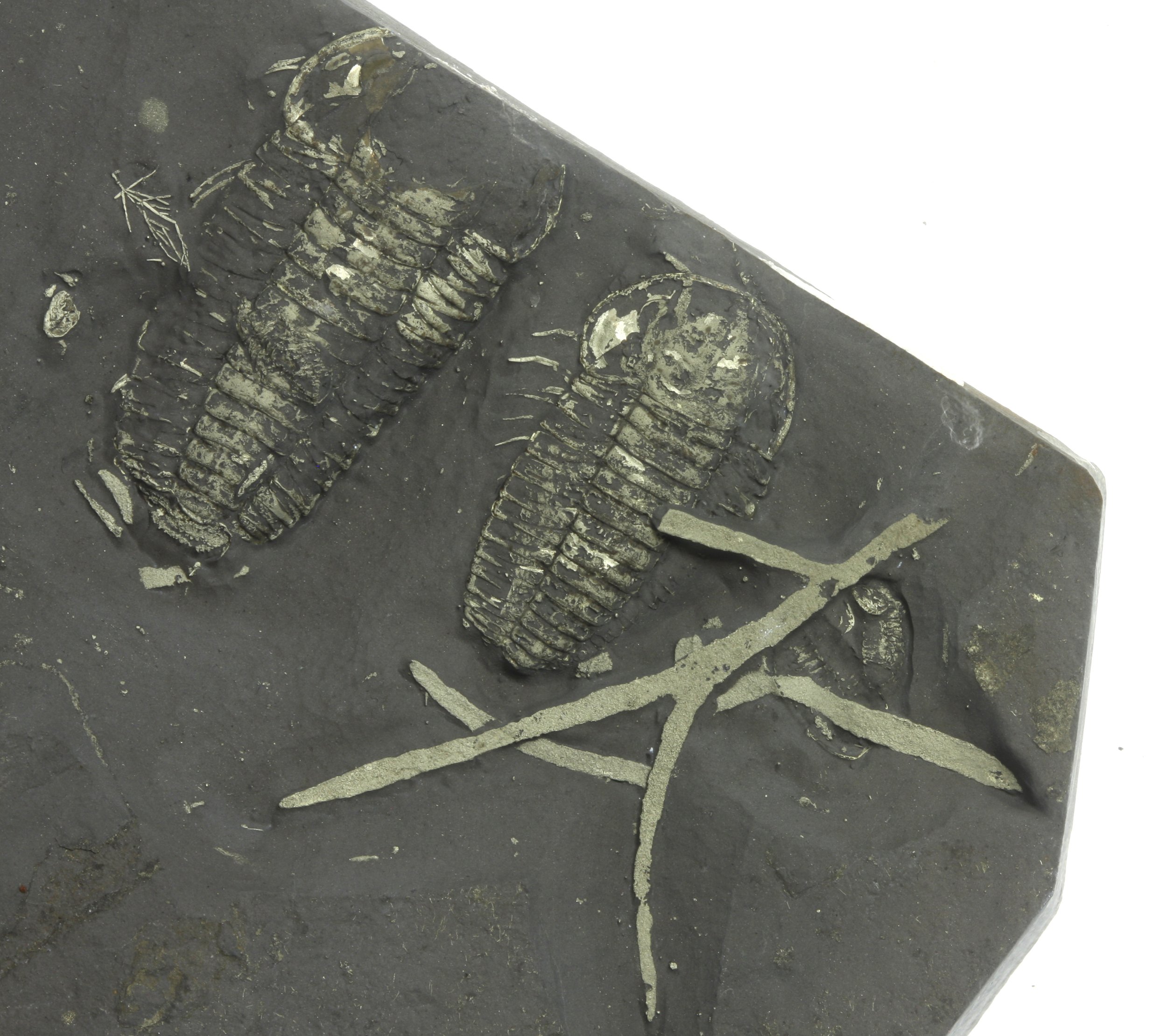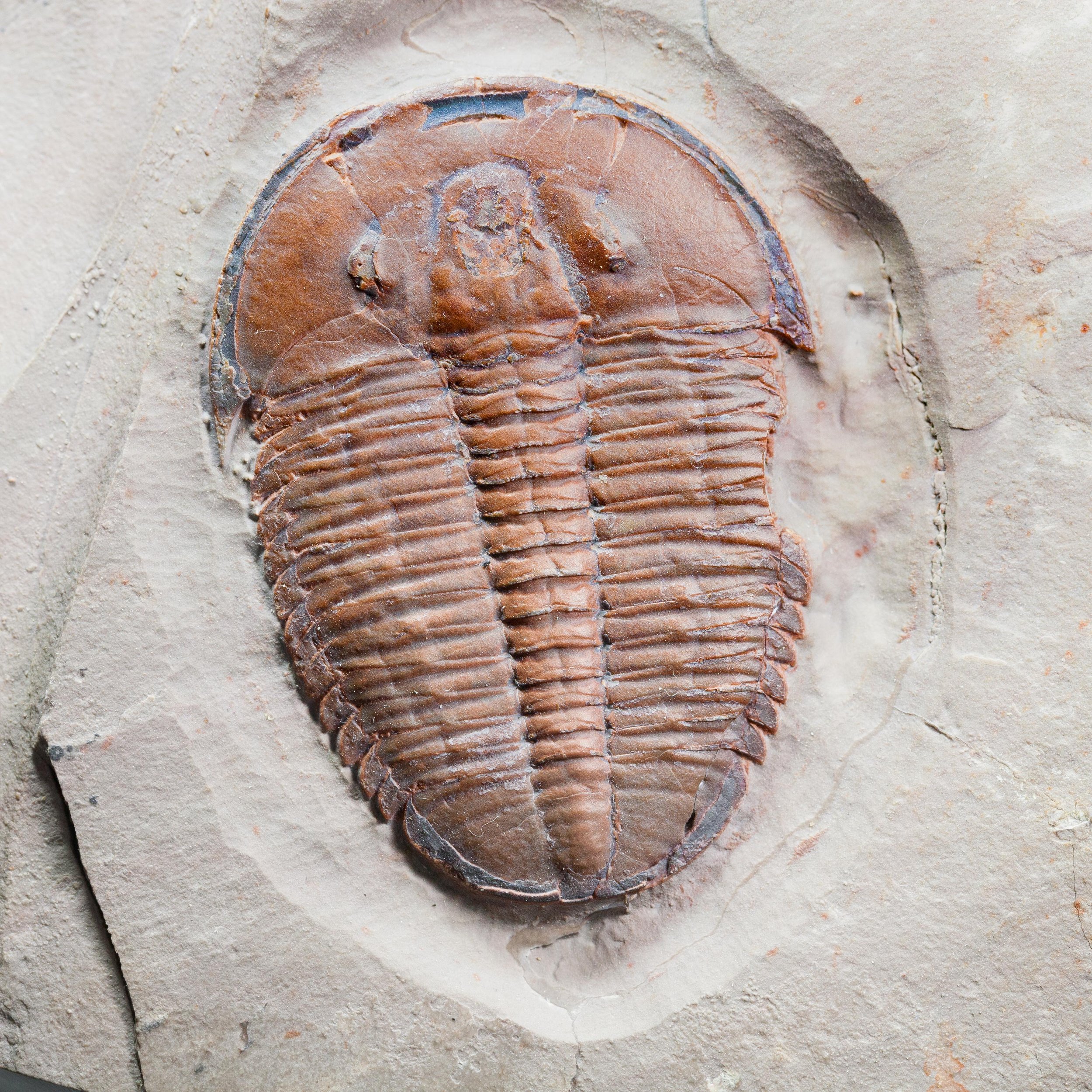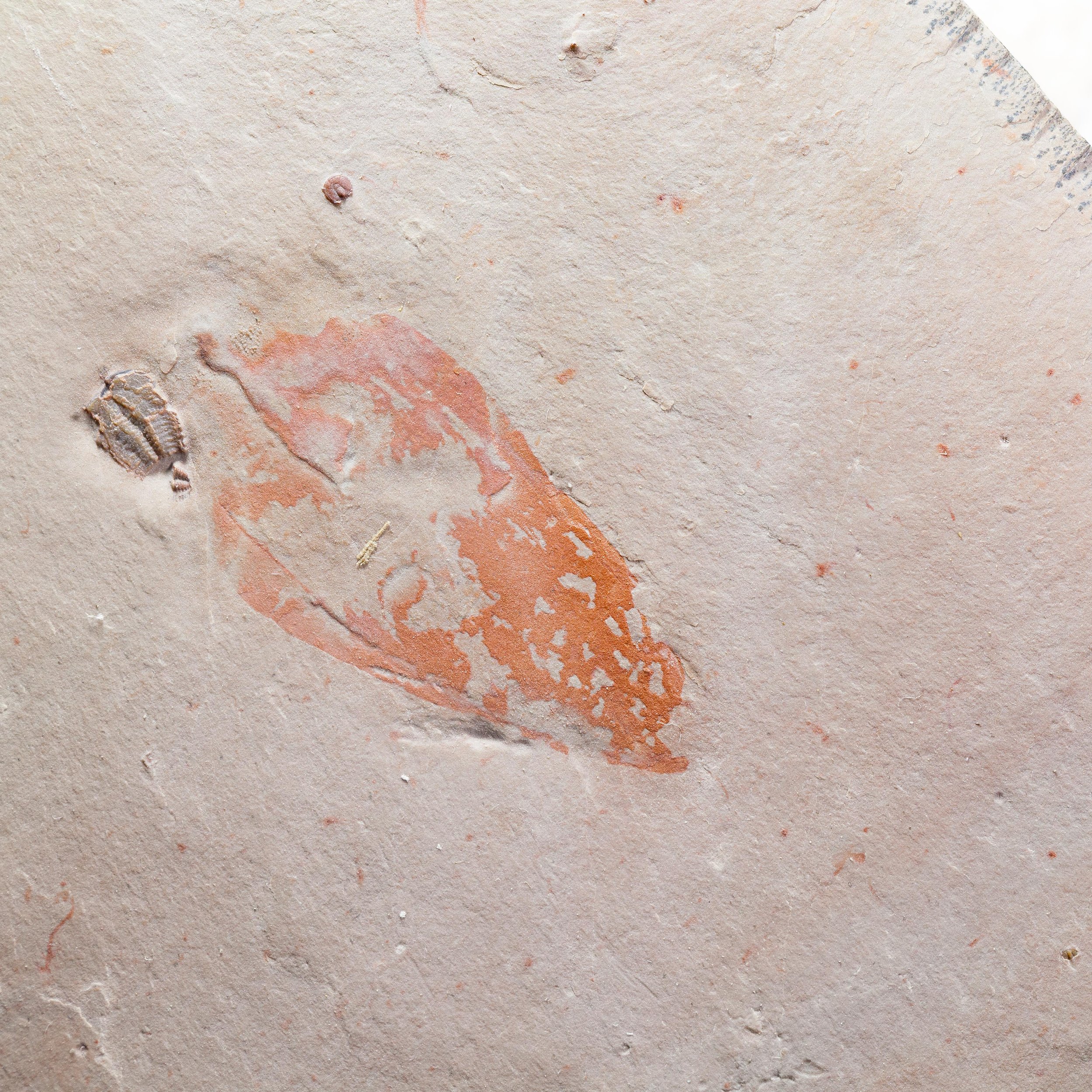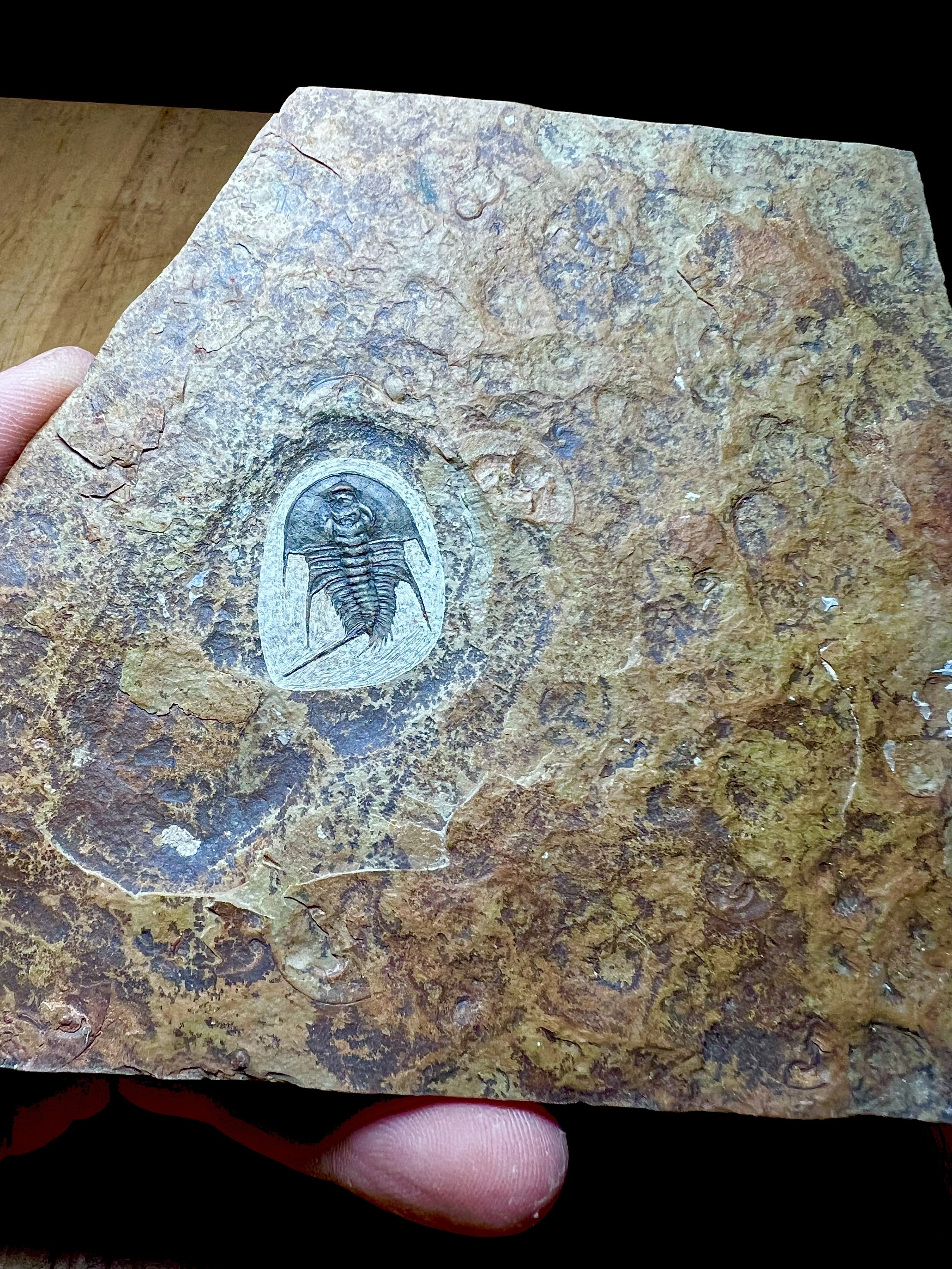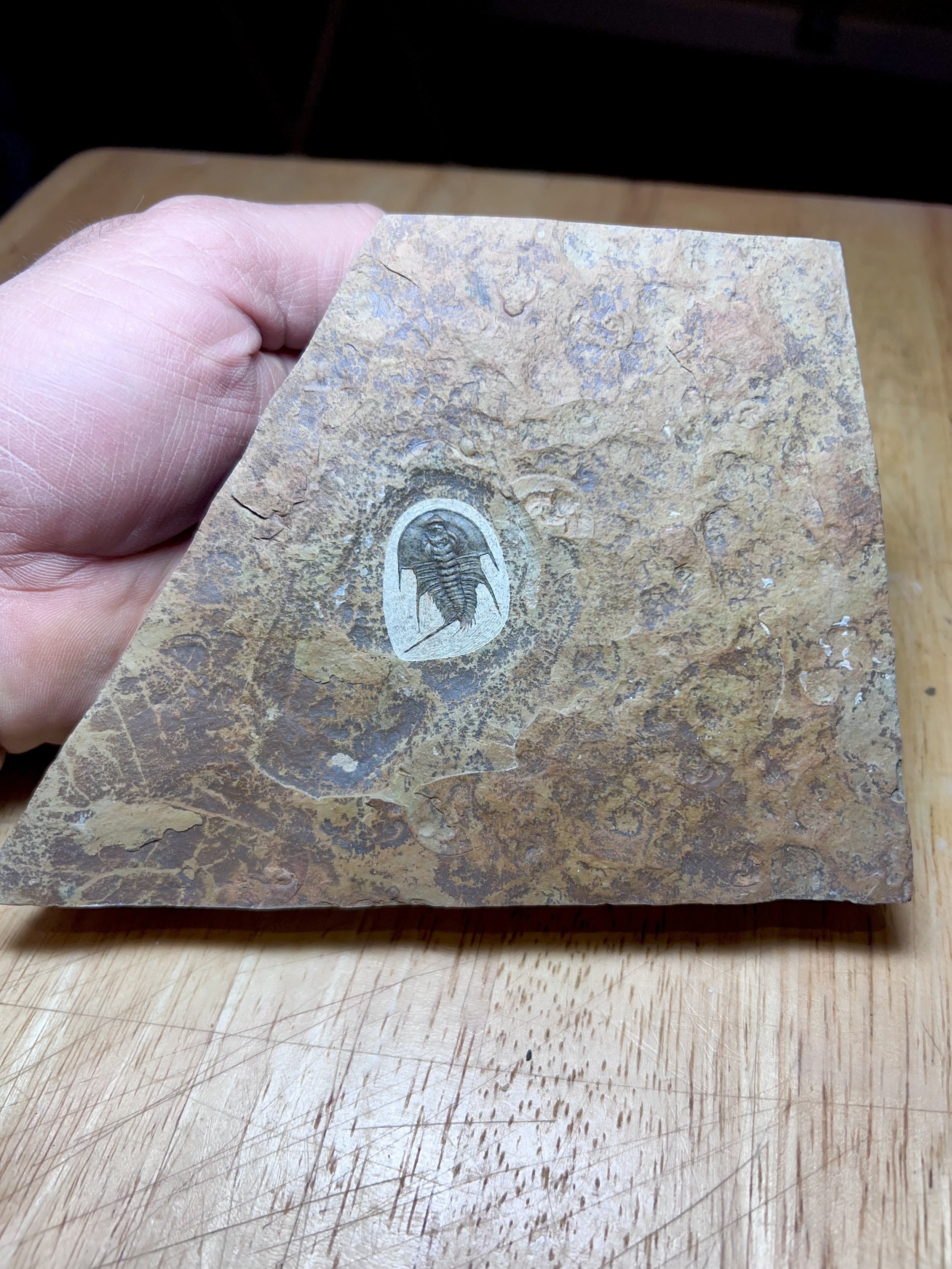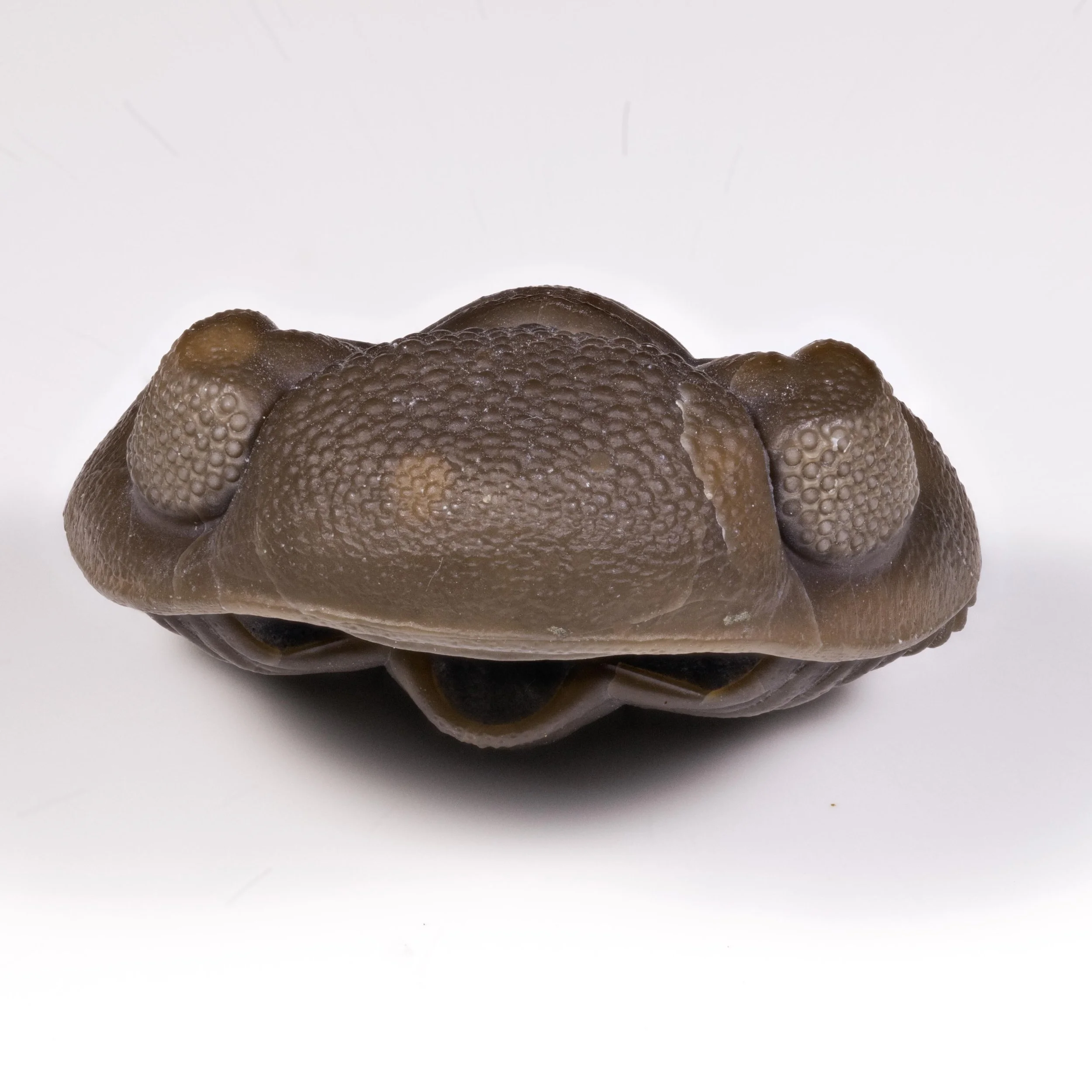 Image 1 of 9
Image 1 of 9

 Image 2 of 9
Image 2 of 9

 Image 3 of 9
Image 3 of 9

 Image 4 of 9
Image 4 of 9

 Image 5 of 9
Image 5 of 9

 Image 6 of 9
Image 6 of 9

 Image 7 of 9
Image 7 of 9

 Image 8 of 9
Image 8 of 9

 Image 9 of 9
Image 9 of 9










Eldredgeops crassituberculata
Vendor: Fossil Soup
SKU Number: SQ6147478
Complete enrolled Eldredgeops crassituberculata from the famous Paulding Quarry in Western Ohio. If this were a prone trilobite, the length would have been around 2 2/16 inches.
This is a great example of an enrolled and hard to come by trilobite, now that collecting at the Le Farge quarry is prohibited. The vincular furrow, a trough in the cephalic doublure (ventral side of the border of the head) is well defined, with a prominent inner border. This is where the pygidium would fit tightly with the cephalon when the trilobite was enrolled. In this example the trilobite has undergone some compression and the pygidium has been pushed up into the underside of the cephalon. Nonetheless, this is a beautifully complete specimen with a beautiful chocolate color.
Full dimensions are listed below.
Vendor: Fossil Soup
SKU Number: SQ6147478
Complete enrolled Eldredgeops crassituberculata from the famous Paulding Quarry in Western Ohio. If this were a prone trilobite, the length would have been around 2 2/16 inches.
This is a great example of an enrolled and hard to come by trilobite, now that collecting at the Le Farge quarry is prohibited. The vincular furrow, a trough in the cephalic doublure (ventral side of the border of the head) is well defined, with a prominent inner border. This is where the pygidium would fit tightly with the cephalon when the trilobite was enrolled. In this example the trilobite has undergone some compression and the pygidium has been pushed up into the underside of the cephalon. Nonetheless, this is a beautifully complete specimen with a beautiful chocolate color.
Full dimensions are listed below.
Vendor: Fossil Soup
SKU Number: SQ6147478
Complete enrolled Eldredgeops crassituberculata from the famous Paulding Quarry in Western Ohio. If this were a prone trilobite, the length would have been around 2 2/16 inches.
This is a great example of an enrolled and hard to come by trilobite, now that collecting at the Le Farge quarry is prohibited. The vincular furrow, a trough in the cephalic doublure (ventral side of the border of the head) is well defined, with a prominent inner border. This is where the pygidium would fit tightly with the cephalon when the trilobite was enrolled. In this example the trilobite has undergone some compression and the pygidium has been pushed up into the underside of the cephalon. Nonetheless, this is a beautifully complete specimen with a beautiful chocolate color.
Full dimensions are listed below.
Additional Information
Phacops / Eldredgeops
Eldredgeops is a recently introduced genus (1990), replacing Phacops as the name for the common North American Devonian Phacopid trilobite. The change was necessary to distinguish between morphological differences observed in Phacopid trilobites on the African and European edge of the Rheic Ocean and those on the N. American edge.
Calymmene latifrons, the first Phacopid trilobite to be described, was found in Gerolstein, Germany. Unfortunately the holotype was lost and topotype material was used until a neotype specimen was designated in 2006. The neotype was designated Phacops latifrons and is now the definitive specimen for the description of Phacops. When a change in name was suggested, it was the N. American trilobite that received the new genus name as the European trilobite had been described first.
For a really good understanding of the differences between the 2 genera, follow the link at the bottom of this page. The post is on The Fossil Forum and is by Gerry Kloc, and dated June 8, 2014.
References:
